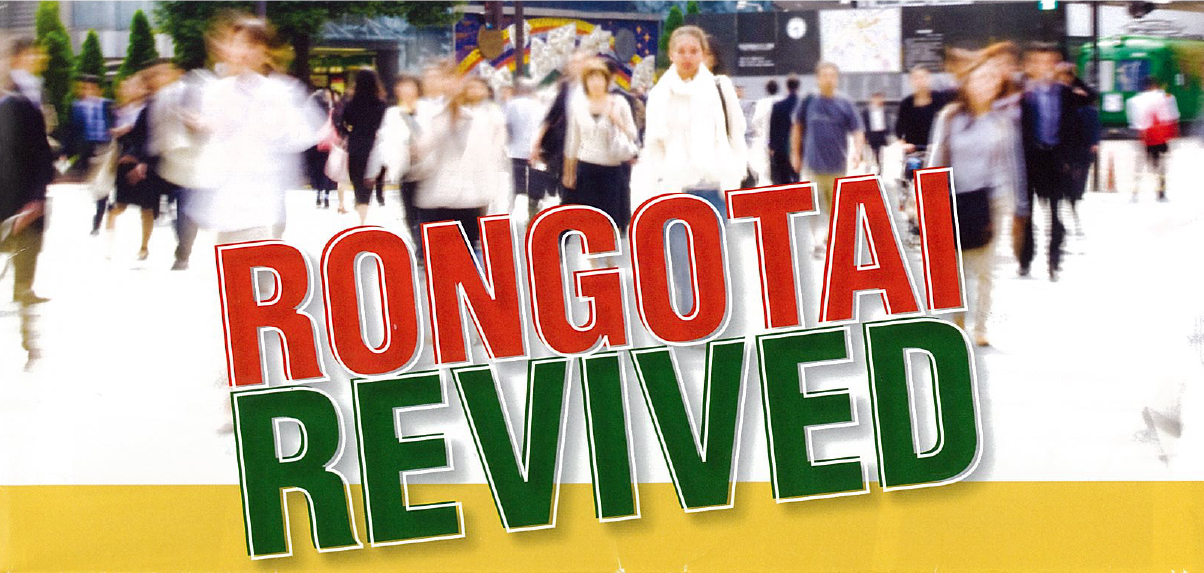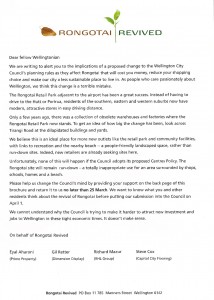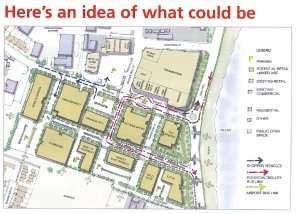I have come to this a little late, as it has already been the subject of about 30 or so comments over on Eye of the Fish, and I did think that perhaps I wouldn’t bother posting anything on it given the stirling job they usually do over there.
Then I read the post.
Disappointingly, it is knee-jerk culturally-elitist pompous rubbish that alienates the people who are going to be affected by the Rongotai Revived (RR) proposal, and does the cause of good urban design (and more generally, thoughtful socialism), no amount of good in the process. Looking down your nose at the culture of others is called all sorts of terrible things if the cultures are of another creed/race/sexual orientation/etc – so why is it ok to diss the activities of the majority of the lower and middle classes with so much blathering arrogance??The disappointing thing about the EotF blog post (other than lowering the tone of their blog – which is their right), is that it counters a logical argument with shrill rhetoric. Its only form of evidence employed is speculation, which lo-and-behold, supports their argument to a tee. The days of the carefully crafted position of WellUrban (which EotF is the nominal replacement for) are sorely missed indeed…
Ok, calming down now, what is RR all about – click on the thumbnails below (isn’t it a pretty letter?):
I don’t agree with the Rongotai Revived scheme, and agree with EotF that RR have indulged in scaremongering and willful contradictions to make their case stronger (e.g. a work-zoned area is not needed on the one hand and will thus remain as dilapidated/abandoned buildings, can hardly be reconciled with impending abattoirs, battery recyclers, and the like)…
Lyall Bay has recently undergone something of a revival, due in part to the presence of the relatively new airport ‘retail park’ (should be retail carpark) development – let’s not be dismissive about that because we don’t like them, but also down to other factors such as the appearance of a couple of cafe’s, a resurgence in surf club activities, etc. You could even say the area is currently undergoing something of a glacial gentrification as the elderly and low incomers are replaced by middle-class young families, and as older housing stock is made over in the best of our kiwi DIY tradition. Certainly, the area experienced one of the higher property value growths of the Wellington area in the years prior to our current situation, and even now, is not pulling back as much as some markets are.
Despite EotF’s amazing speculative ability, Wellingtonians do travel to the mega-malls – and not just the residents of the Northern Suburbs. The fish needs to deign to swim outside of its own little school of like-minded every now and then to see how life really exists in the greater ocean. The malls happen to be very attractive to a broad range of people – from the lower end to the upper middle classes – people who generally want to shop at one destination, where parking is easily available, and all of the major chain stores are located. That’s not me, but I am not going to deny that it exists, or that this group of people isn’t the overwhelming majority of our fellow residents, and nor am I prepared to assume any form of superiority over those who do choose to shop in this manner. I will admit however, that I do shop at big box retail when I need a number of large items from a range of stores (at the best prices) – something that would be difficult to do using the golden mile and PT combination – so yes, big box retail does offer some advantages even to those of us who do not count shopping as a recreation. It is here by demand, and I would suggest it is here to stay.
RR’s argument about the extra miles that this shopping migration encourages is interesting though, but, I think, needs to be balanced by an assessment of the roading infrastructure that facilitates this. Can the suburban streets of the Rongotai area (a far cry from the motorway and car-prioritised roadways of Porirua and Lower Hutt), cope with much more traffic; especially when it is suggested that the bulk of the traffic will be generated from the southern and eastern suburbs?
Any stroll through ‘high’ street Kilbirnie will show that it fails to meet the needs of its residents, and most will tottle off in their cars in search of their consumer goods, either in town, or to the mega-malls in our satellite cities. RR make the point that this is hardly sustainable in terms of the extra travel generated (don’t you just love the structural illogicality of their ‘sustainability’ argument when they are promoting consumer culture…). A revamped Kilbirnie might be one solution (and is actually on the Council’s agenda), but alone, is not enough to service the entire Kilbirnie, Rongotai, Lyall Bay area (if you consider the usual walkability radius and the like).
Now, I am not going to champion the solution offered by RR, especially as it consists of little more than big boxes amidst ‘greened’ carparks, but I have to say that the current use of the land seems rather wasteful given the land shortage that is at the root of our ridiculously-priced real estate. As an industrial centre it is not very intensively occupied, and is, as suggested, somewhat dilapidated and an odd fit in its contemporary context (it really is a relic of older zoning decisions – but lacks the ‘charm’ necessary for it to be considered as a ‘heritage’ area). A clever solution might incorporate the light industrial activities with retail, leisure, and residential development in a dense mixed-used development that provides employment, retail service and housing in one intensive urban node. I see that the WCC Centres policy document even gives the existing airport retail park the classification as a suburban centre – so why not actually make it one?
As a resident of Lyall Bay, I received the RR mailer in my letter box and was immediately intrigued by the logic offered, and the openness of those behind it (well, that they were prepared to admit they were from ‘big business’ anyway – which was pretty obvious given the glossy professionalism of the brochure). I do bear in mind that businesspeople are generally primarily interested in promoting their businesses, but am not of the persuasion that businesspeople are automatically bad (the poor-and-us-are-good vs the anyone-richer than-us-is-bad divide that typifies much of the more extremist left-wing ‘ideology’). Thus, I accept RR’s argument (except for the rather dubious scaremongering), that there is a general ‘need’ (read demand) for such a development, but disagree with their proposed solution. It is on the latter grounds that the architectural and urban design community should engage with the development in order to force a higher quality mixed-use solution… imho…
As for the fish, well…, everyone knows how a fisheye lens distorts views…
m-d





Leave a Reply